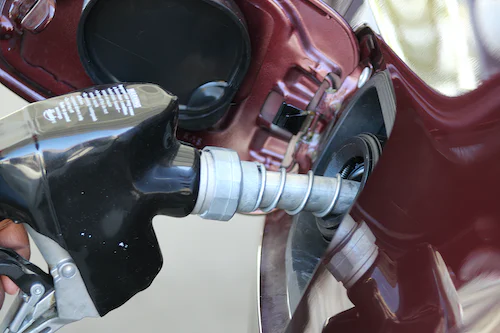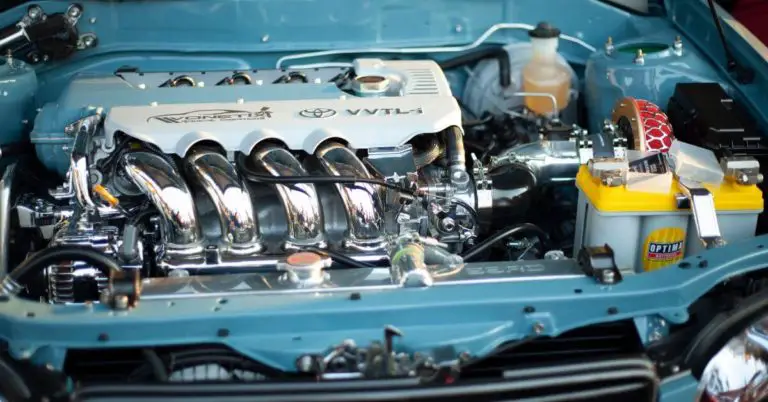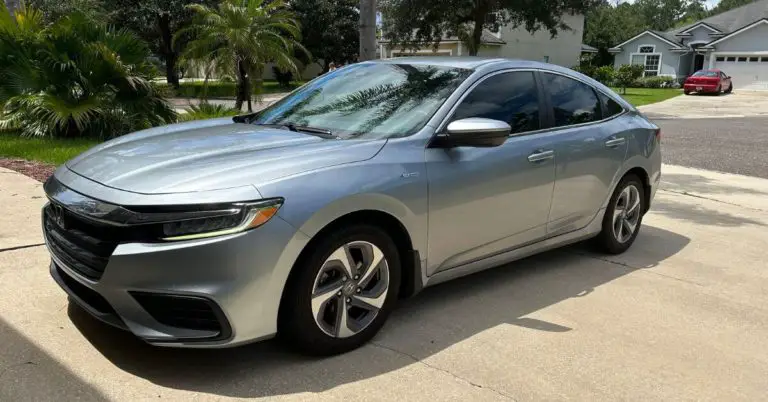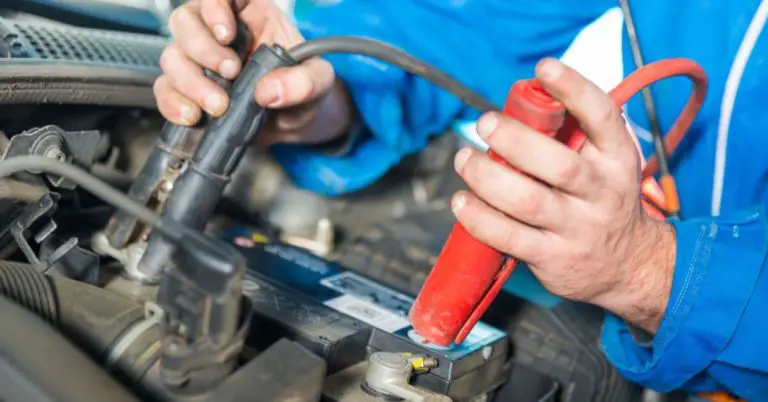How Many Miles In A Gallon: 5 Incredible Efficiency Tips
As a professional automotive blogger and car enthusiast, I often ponder one question: “How many miles in a gallon of gas?”
This question is crucial for understanding your vehicle’s performance and managing your fuel expenses, and reducing your environmental impact.
Table of Contents
Understanding Miles Per Gallon (MPG)
Miles Per Gallon, or MPG, measures how far a car can travel per gallon of fuel. It’s a crucial metric for understanding fuel efficiency.
The higher the MPG, the more distance your car can cover with a single gallon of gas. This means you’ll spend less on fuel and reduce your carbon footprint.
The concept of MPG has a rich history. It was initially developed as a standard measure of fuel efficiency to help consumers understand how much distance their vehicle could cover with a certain amount of fuel.
This measure is significant because it directly impacts the cost of operating the car and the vehicle’s environmental impact.

Different types of vehicles and fuels can have varying MPG values.
For instance, a compact car typically has a higher MPG than a large SUV because it’s lighter and requires less energy.
Similarly, a vehicle running on diesel might have a different MPG than a vehicle running on gasoline or electricity.
Electric cars, for instance, do not directly burn fuel, so they use a measure called miles per gallon gasoline equivalent (MPGe) to compare their efficiency to traditional vehicles.
You can also access the chart directly via this link.
The MPG of a vehicle can also be influenced by driving behavior.
Sudden acceleration and heavy braking can reduce a vehicle’s MPG because these maneuvers require more energy.
Therefore, driving smoothly and maintaining a steady speed can help improve a vehicle’s MPG.
Understanding MPG is not just about knowing how far your car can travel on a gallon of fuel.
You can also access the chart directly via this link.
It’s also about understanding the factors that influence this measure and how changes in these factors can affect your vehicle’s fuel efficiency.
By understanding MPG, you can make more informed decisions about your car and driving habits to save money and reduce environmental impact.
Factors That Impact How Many Miles In A Gallon
Several factors can affect how many miles in a gallon. Let’s delve deeper into some of them:
Vehicle Weight:
Heavier vehicles require more energy to move, which can lower your MPG. This is due to the physics principle that a larger mass requires more force.
The heavier the vehicle, the more fuel it needs to overcome its inertia and start moving. Once in motion, a heavier car needs more fuel to overcome the rolling resistance.
Efficiency isn’t just about fuel but also design and functionality. If you’ve ever wondered whether the design of SUVs could include sliding doors for added efficiency, our latest article has the answers.
For a more detailed look at how vehicle weight impacts fuel efficiency, check out our article How Much Does The Average Car Weigh?
Vehicle Type:
The type of vehicle you drive also plays a role in your MPG. For instance, high-profile vehicles like SUVs often have lower MPG due to their size and weight.

This is because larger vehicles have a greater frontal area, which increases air resistance. Furthermore, high-profile cars often have a higher center of gravity, which can increase tire rolling resistance.
Learn more about the advantages and risks of high-profile vehicles in our article High Profile Vehicles: Advantages and Risks.
Maintenance:
Regular maintenance is important for keeping MPG high. Issues like engine problems can significantly reduce your vehicle’s fuel efficiency.
Regular maintenance tasks that can improve MPG include:
- Changing the oil regularly.
- Keeping the tires properly inflated.
- Replacing air filters as needed.
These tasks help the engine run more smoothly and reduce unnecessary resistance. Please read our Common Problems After Engine Replacement article for more information.
Driving Behavior:
The way you drive can also have a significant impact on your vehicle’s MPG. Sudden acceleration and heavy braking can waste energy and lower your MPG.
Driving at a steady speed, avoiding rapid acceleration, and braking smoothly can help improve your fuel efficiency.
Aerodynamics:
The design of your vehicle can also affect its MPG. Cars with a sleek, streamlined design experience less air resistance and have better fuel efficiency.
On the other hand, cars with a boxy design or lots of exterior accessories (like roof racks) can experience more air resistance and have a lower MPG.
Tire Rolling Resistance:
The tires on your vehicle can also impact your MPG. Tires with a high rolling resistance require more energy to move, which can lower your MPG.

Factors that increase tire rolling resistance include under-inflation, misalignment, and wear.
Frequently checking your tire pressure and alignment can reduce rolling resistance and improve your MPG.
Engine Efficiency:
The efficiency of your vehicle’s engine can significantly impact your MPG.
More efficient engines can convert a higher percentage of the energy from fuel into power for the car, resulting in a higher MPG.
Factors affecting engine efficiency include the engine design, the type of fuel used, and the engine’s condition.
You can also access the chart directly via this link.
How to Improve Your Vehicle’s MPG
Improving your vehicle’s MPG can save you money and help the environment. Here are some detailed tips:
Regular Maintenance:
Regular maintenance, such as timely oil changes, tire rotations, and air filter replacements, can help maintain your vehicle’s fuel efficiency.
A well-maintained engine runs more efficiently, burns fuel more thoroughly, and has fewer emissions.
Drive Efficiently:
Avoid rapid acceleration and excessive braking. These driving habits can consume more fuel.
The U.S. Department of Energy states that aggressive driving can substantially decrease your gas mileage.
Specifically, it can reduce about 15% to 30% at highway speeds and between 10% and 40% in situations involving stop-and-go traffic.
Sensible driving is also safer for you and others, so that you may save more than gas money.
Use the Right Tires:
Using the right tires for your vehicle and keeping them properly inflated can improve your MPG and reduce noise.
Under-inflated tires can lower fuel efficiency by about 0.2% for every one psi drop in the average pressure of all four tires. Properly inflated tires are safer and last longer.
Reduce Excess Weight:
Carrying additional weight can negatively impact your vehicle’s fuel efficiency.
For instance, an extra 100 pounds in your car could decrease your MPG by approximately 1%.
This reduction is proportional to the excess weight of the vehicle’s total weight and tends to impact smaller vehicles more than larger ones significantly.
Therefore, it’s advisable to eliminate any unnecessary items from your vehicle to maintain it as lightweight as possible.
You can also access the chart directly via this link.
Use the Right Fuel:
Using the right fuel for your vehicle can also improve your MPG.
Check your vehicle’s manual to see what type of fuel is recommended. Some vehicles may require premium fuel, while others may not.
Using the wrong kind of fuel can lower your gas mileage.
Avoid Excessive Idling:
Idling can consume a quarter to a half gallon of fuel every hour, depending on the engine’s size and the air conditioner’s usage.
Therefore, it’s more fuel-efficient to turn off your engine when your vehicle is stationary.
Restarting your car only requires approximately 10 seconds of fuel, making it a more economical choice.
Use Cruise Control:
Utilizing cruise control while driving on highways assists in maintaining a steady speed, which in many instances, results in fuel savings.
However, using it only in areas with a few hills is advisable.
Cruise control can cause your vehicle to accelerate and decelerate frequently to maintain the set speed on hilly terrains, leading to increased fuel consumption.
Avoid Hauling Cargo on Your Roof:
Carrying cargo on your vehicle’s roof can escalate aerodynamic drag, also known as wind resistance, which diminishes fuel efficiency.
For instance, a bulky roof-top cargo box can decrease fuel economy by approximately 2% to 8% during city driving, 6% to 17% on highways, and 10% to 25% at Interstate speeds.
If you find it necessary to use an external cargo container, it’s advisable to remove it when not in use. This simple action can lead to fuel and, consequently, monetary savings.
Information on improving vehicle’s MPG sourced from FuelEconomy.gov.
“Victory is won not in miles but in inches. Win a little now, hold your ground, and later, win a little more.”
Louis L’Amour
The Impact of MPG on the Environment
Fuel efficiency isn’t just about saving money; it’s also about reducing your environmental impact.
Cars that have a high MPG consume less fuel, which means they emit fewer greenhouse gases.
You’re contributing to a more sustainable future by improving your vehicle’s MPG.
The Impact of MPG on the Environment
Fuel efficiency isn’t just about saving money; it’s also about reducing your environmental impact.
Cars that have a high MPG consume less fuel, which means they emit fewer greenhouse gases.
You’re contributing to a more sustainable future by improving your vehicle’s MPG. Let’s delve deeper into the environmental implications of fuel efficiency:
Greenhouse Gas Emissions:
The combustion of fossil fuels such as gasoline and diesel results in carbon dioxide emission, a notable greenhouse gas, into our atmosphere.
The accumulation of carbon dioxide (CO2), along with other greenhouse gases like methane (CH4), nitrous oxide (N2O), and hydrofluorocarbons (HFCs), is leading to a warming effect on the Earth’s atmosphere.
This warming is triggering noticeable alterations to our climate, some of which we are already beginning to observe in our present day.
Transportation’s Contribution to Emissions:
The transportation sector is responsible for approximately 29 percent of all greenhouse gas emissions in the United States, making it the most significant contributor to its overall greenhouse gas emissions.
Reducing Emissions:
Enhancing your vehicle’s miles per gallon (MPG) can substantially reduce these emissions.
For instance, regulations on greenhouse gas emissions for light-duty passenger vehicles and trucks are expected to eliminate around 6 billion metric tons of greenhouse gas emissions over the lifespan of cars sold between 2012 and 2025.
Renewable Fuels:
Using renewable fuels is another effective strategy to decrease greenhouse gas emissions.
These fuels, derived from sources such as plants, crops, and other forms of biomass, can lower greenhouse gas emissions when used as alternatives to traditional fossil fuels.
The Road Ahead:
While the transportation sector remains a significant contributor to U.S. emissions, numerous opportunities exist to reduce greenhouse gas emissions within this sector.
These include using low-carbon fuels, developing and implementing new and improved vehicle technologies, reducing the total miles traveled by vehicles, and more efficient operation of vehicles.
All these approaches contribute to the reduction of greenhouse gases from transportation.
Information sourced from the U.S. Environmental Protection Agency
Case Study: Real-Life MPG Example
As a real-life case study, I’d like to share my experience with my 2020 Honda Insight Hybrid. This vehicle has truly redefined my understanding of fuel efficiency.
When I purchased the car, Honda advertised it with a bold claim of 55 miles per gallon, a figure prominently displayed on the windshield sticker.
However, the reality has been pleasantly surprising, LOL
Contrary to my initial expectations, the car’s fuel efficiency has consistently outperformed the promised figure.
On average, I’ve been achieving between 62 to 65 miles per gallon, surpassing the manufacturer’s estimate.
My record is an impressive 72 miles per gallon, a testament to the car’s exceptional fuel economy.
So, if you’re interested in learning more about the Honda Insight Hybrid and my day-to-day experience with the vehicle, stay tuned.
I’m sharing a comprehensive review detailing the pros and cons of living with this remarkably fuel-efficient car.
FAQ
How many miles do I get per gallon?
The miles you get per gallon can vary greatly depending on the type of vehicle you drive, its condition, and your driving habits. On average, a car might get between 20 to 30 miles per gallon.
How many miles will 5 gallons get you?
If your vehicle gets an average of 25 miles per gallon, 5 gallons of fuel will allow you to travel approximately 125 miles. However, this can vary based on the factors mentioned above.
How many miles does your car drive in one gallon?
This depends on your car’s fuel efficiency. If your car gets 30 miles per gallon, you can drive 30 miles on one gallon of fuel.
How many miles can a car travel on one gallon of gas?
This depends on the car’s fuel efficiency. For example, a car that gets 30 miles per gallon can travel 30 miles on one gallon of gas.
How many miles is 2 gallons of gas?
This would depend on your vehicle’s fuel efficiency. For example, if your car gets 30 miles per gallon, 2 gallons of gas would allow you to travel 60 miles.
How far can you drive on one tank of gas?
This depends on your vehicle’s fuel tank size and fuel efficiency. For example, if your car has a 15-gallon tank and gets 30 miles per gallon, you could drive 450 miles on a full tank.
How many miles per gallon of gas does a Honda get?
The fuel efficiency of a Honda can vary depending on the model and year. For example, a 2021 Honda Insight Hybrid can get an average of 55 miles per gallon.
How many miles per gallon of gas does a Toyota Corolla get?
The fuel efficiency of a Toyota Corolla can vary depending on the model and year. For example, a 2021 Toyota Corolla gets an average of 30 to 40 miles per gallon.
How many miles is 5 gallons of gas?
This would depend on your vehicle’s fuel efficiency. For example, if your car gets 30 miles per gallon, 5 gallons of gas would allow you to travel 150 miles.
Conclusion
Understanding and improving your vehicle’s MPG can have significant benefits, from saving money to reducing environmental impact.
By understanding the factors that affect how many miles in a gallon and implementing strategies to improve it, you can get the most out of every gallon of gas.
For more insights into vehicle performance and maintenance, check out our other articles, such as SUVs With Air Suspension: A Game Changer!








